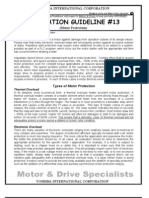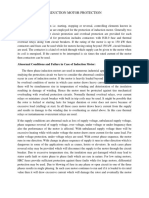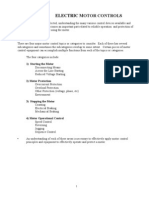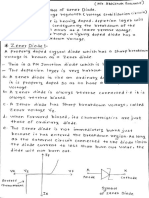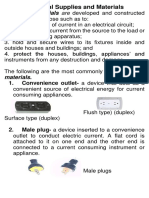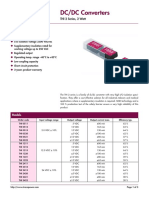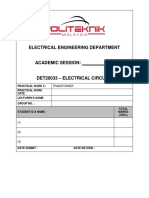0% found this document useful (0 votes)
50 views7 pagesProtection System in Motors
The document outlines a lesson index on motor protection, covering topics such as motor basics, protection systems, starting methods, and overload protection. It identifies the leading causes of motor failure, primarily thermal overload and short circuits, and explains the importance of overload relays and Motor Protection Circuit Breakers (MPCB) in safeguarding motors. Additionally, it discusses the differences between thermal and electronic overload relays, their operational principles, and the significance of tripping curves in motor protection.
Uploaded by
Shan BabuCopyright
© © All Rights Reserved
We take content rights seriously. If you suspect this is your content, claim it here.
Available Formats
Download as PDF, TXT or read online on Scribd
0% found this document useful (0 votes)
50 views7 pagesProtection System in Motors
The document outlines a lesson index on motor protection, covering topics such as motor basics, protection systems, starting methods, and overload protection. It identifies the leading causes of motor failure, primarily thermal overload and short circuits, and explains the importance of overload relays and Motor Protection Circuit Breakers (MPCB) in safeguarding motors. Additionally, it discusses the differences between thermal and electronic overload relays, their operational principles, and the significance of tripping curves in motor protection.
Uploaded by
Shan BabuCopyright
© © All Rights Reserved
We take content rights seriously. If you suspect this is your content, claim it here.
Available Formats
Download as PDF, TXT or read online on Scribd
/ 7















